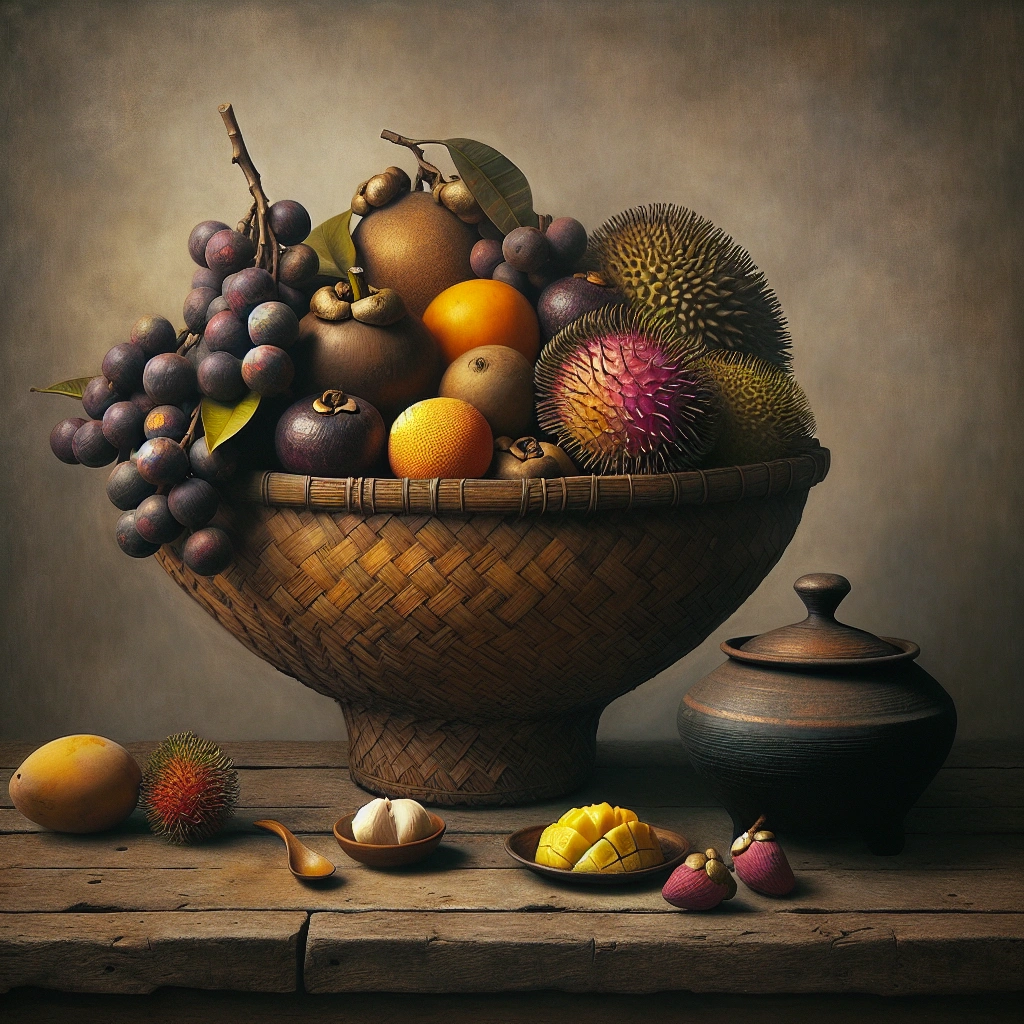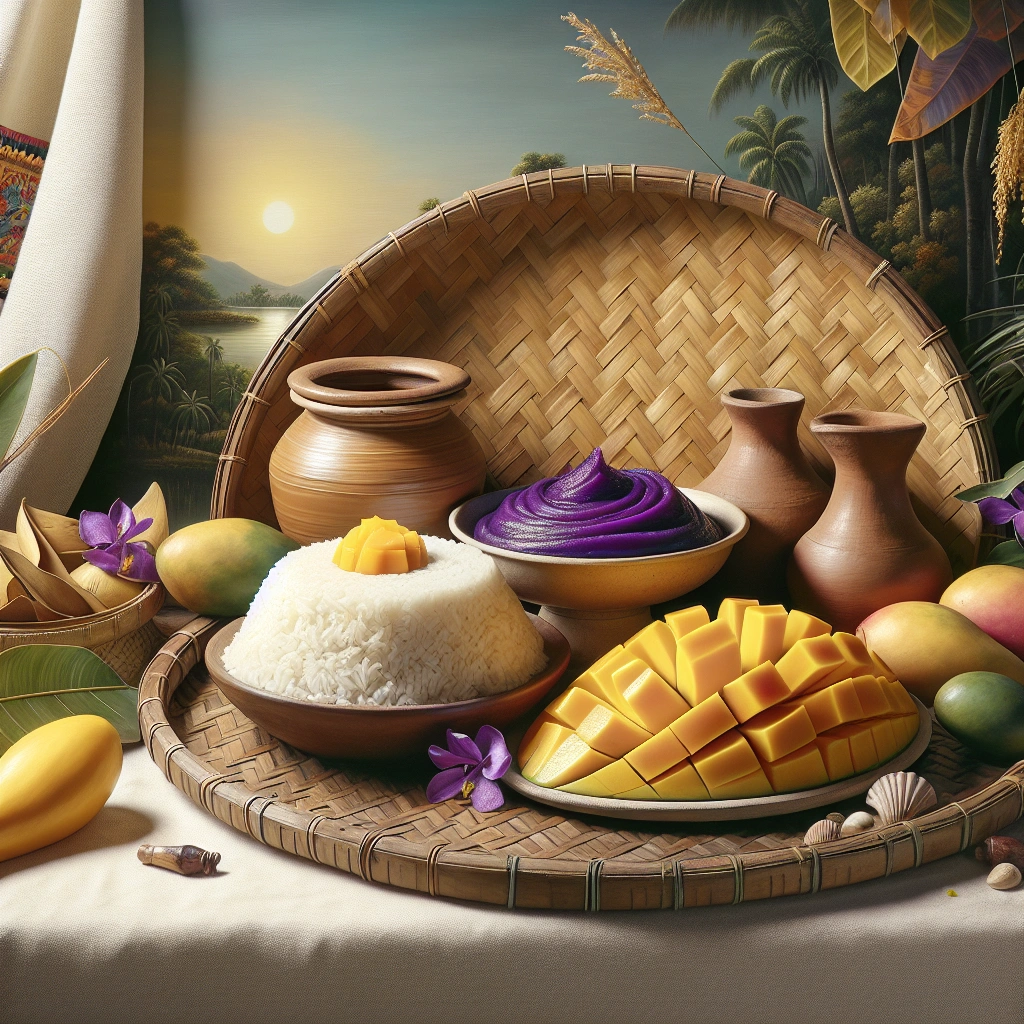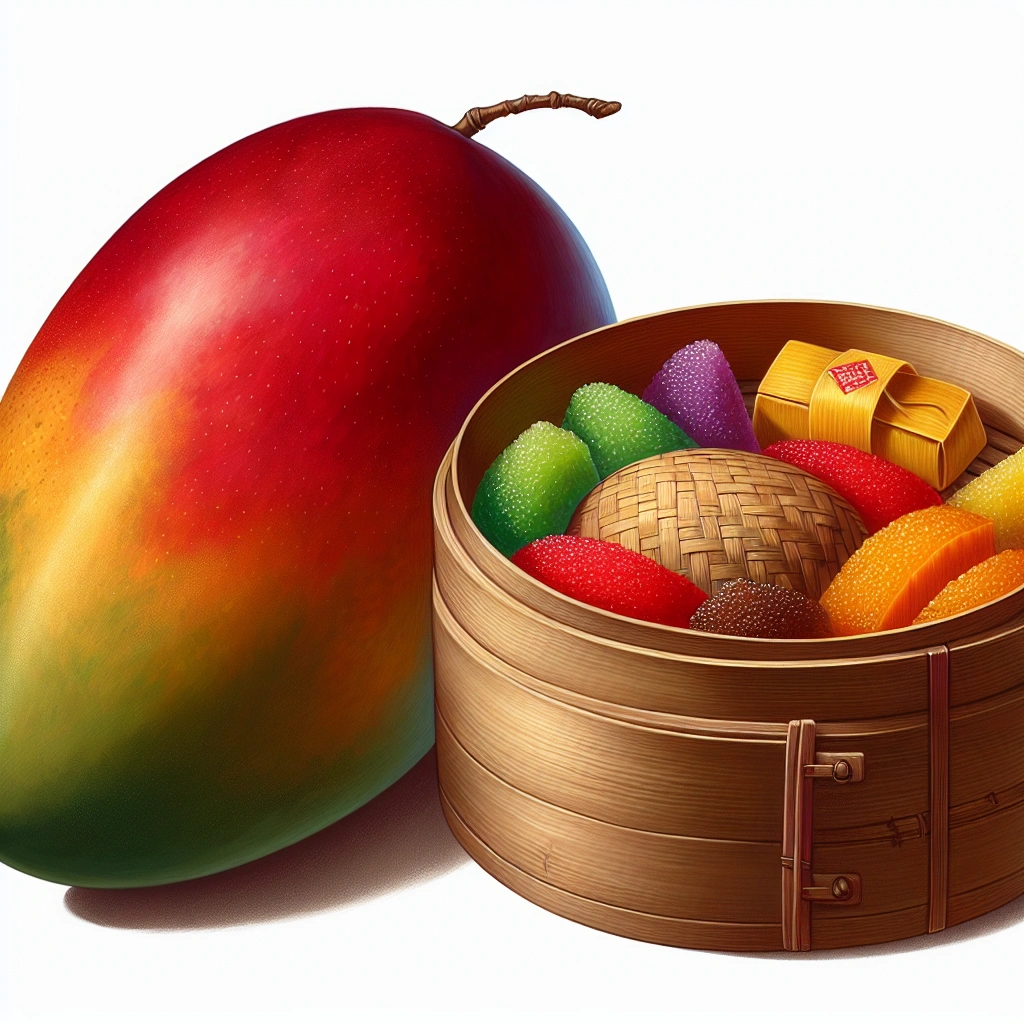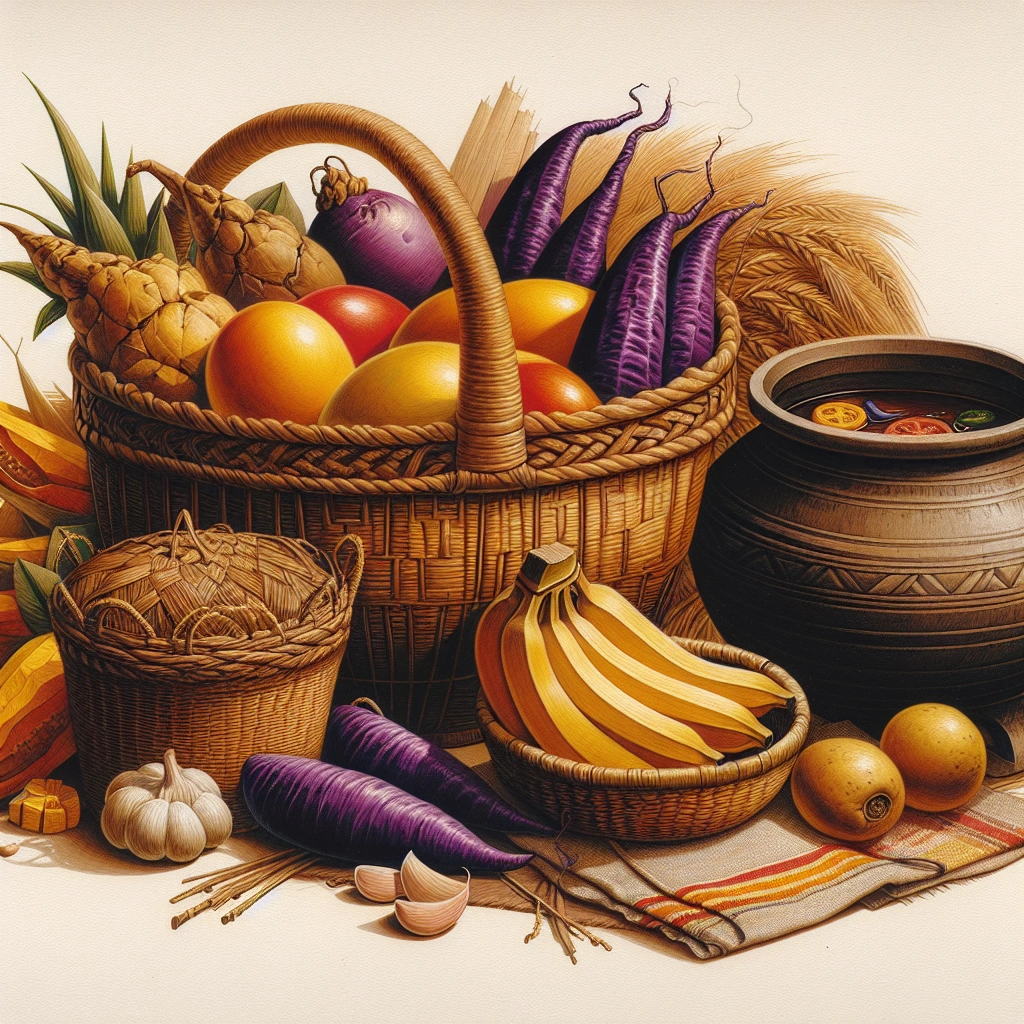Short Answer for What Are the Cultural and Culinary Attractions in the Area of Philippines?
The cultural and culinary attractions in the Philippines include vibrant festivals such as the Bawang Festival and the Lanzones Festival, alongside a rich array of regional specialties like Adobo, Chicken Inasal, and Sinuglaw, showcasing the Philippines’ diverse history and the influence of Spanish, Chinese, American, and Indian cultures on its cuisine.
Imagine stepping into a world where every bite tells a story, a world that’s not just about tasting but about experiencing a rich heritage through flavors that sing with history and tradition. The Philippines offers exactly that – a tantalizing journey through its cultural and culinary attractions that promise to enrich your soul and palette. From the vibrant festivals to the unique fusion of global influences in its local dishes, this is a call to all food lovers and culture enthusiasts to dive into an experience like no other.
In the heart of Southeast Asia, the Philippines stands proud with its array of dishes that are a testament to the country’s diverse history. From the northern terrains of Luzon to the southern shores of Mindanao, each region presents its own culinary masterpiece, be it the comforting Adobo or the zesty Sinuglaw, offering a taste of the Filipino spirit.
But it’s not just about the food; it’s about what each dish, each festival, and each tradition says about the Filipino way of life. Celebrate with the locals at the Bawang (Garlic) Festival or get lost in the sweet sensation of the Lanzones Festival. This isn’t just a feast for your taste buds but a journey for your heart. Join us as we explore the cultural and culinary attractions in the Philippines, an adventure that promises memories to last a lifetime.
-
The Philippines offers a diverse culinary experience, deeply influenced by Spanish, Chinese, American, and Indian cultures, leading to a unique fusion of flavors.
-
Regional specialties like Adobo in Luzon, Chicken Inasal in the Visayas, and Sinuglaw in Mindanao showcase the country’s variety and the distinct tastes of each area.
-
Festivals such as the Bawang Festival in Ilocos Sur and the Lanzones Festival in Camiguin highlight the importance of agricultural products and local traditions in Filipino cuisine.
-
Pampanga, known as the Culinary Capital of the Philippines, is the place to explore iconic dishes like Sisig, Betute Tagak (stuffed frog), and the unique dessert Halo-halo.
-
Culinary attractions in the Philippines are not just about tasting different foods but also about celebrating the rich historical and cultural tapestry of the nation through food.

A Food Lover’s Guide to the Best of Filipino Cuisine
Embark on a culinary journey through the Philippines, a treasure trove of flavors where each region boasts its unique dishes. From the northern Luzon’s historical Adobo and Ilocos’ intriguing Dinakdakan to the Visayas’ vibrant Chicken Inasal, down to Mindanao’s innovative Sinuglaw, Filipino cuisine is a rich tapestry of history, culture, and unmatched savory delight. Not to forget, the iconic Lechon from Cebu, a universally acclaimed masterpiece, showcases the quintessence of Filipino culinary artistry, making it an essential exploration for every food lover.
Mapping the culinary landscape: From Luzon to Mindanao
Filipino cuisine, folks, it’s unbelievable. It’s like nothing you’ve ever tasted before.
From Luzon down to Mindanao, every region, believe me, has its treasure trove of dishes that reflect its unique culture and historical influences. I’m talking about a culinary journey that’s so diverse, you’re gonna need a map.
Luzon, it’s the big guy, the largest island where the capital, Manila, is located. Here, we dive into the Adobo – it’s not just a dish; it’s an institution. Chicken, pork, sometimes seafood, marinated in vinegar, soy sauce, and garlic, then browned and simmered in the same marinade. You taste this, and you’re tasting history, tradition, the real Filipino spirit.
Down in the Visayas, it’s all about the Chicken Inasal. A chicken dish that’s been marinated in a mixture of lime, pepper, vinegar, and annatto, then grilled over hot coals. You’re biting into something that’s not just delicious, but vibrant, zesty, a true explosion of flavors.
And let’s not forget Mindanao, with their Sinuglaw. It’s a genius combination of grilled pork belly and fish ceviche. Imagine the textures, the refreshing tang contrasted with the rich, smoky flavors of pork. It’s like they’re having a party, and your taste buds are invited.
Delving into regional specialties: A taste of place and tradition
Every Filipino dish tells a story. A story of conquests, trade, and neighborly influences, creating what we now know as one of the most underrated cuisines in the world.
In the Ilocos region, there’s the Dinakdakan, a grilled pork dish that’s both creamy and piquant, thanks to pig brains used as a dressing. Sounds wild, but it’s an absolute delicacy that showcases the Filipino daring to innovate within their culinary traditions.
In Bicol, the love for spicy food is unmatched. Their Bicol Express, named after the express train to the region, is a fiery mix of chili, coconut milk, shrimp paste, and pork. It’s hot, it’s creamy, it’s unlike anything you’ve tried before.
And then we have the kingly Lechon from Cebu, recognized around the world, and I mean, it’s fantastic. A whole pig roasted over coals, achieving that perfect crunchiness to the skin while keeping the insides juicy and flavorful. There’s nothing like it, folks. It’s a masterpiece.
Filipino cuisine, it’s a testament to the country’s rich cultural tapestry. Every bite takes you on a journey through the archipelago’s history, its struggles, and its victories.
It’s a culinary experience that’s not just about eating. It’s about understanding, appreciating, and, most importantly, enjoying every last morsel.
For those adventurous food lovers out there, I’ve gotta say, diving into Filipino cuisine is like discovering a hidden treasure. It’s underappreciated but so, so rich in flavors and stories.
You start exploring, and you’ll find it’s impossible to stop. This guide’s just the beginning, and trust me, you’ll want to taste every dish, visit every region, and learn about every tradition.
The Philippines, folks, it’s a culinary paradise waiting to be explored.

What are the cultural and culinary attractions in the area of Philippines?
The Philippines is a vibrant culinary destination shaped by a multitude of cultural influences including Spanish, Chinese, American, and Indian, creating a unique and rich food heritage celebrated across numerous festivals. Notable examples include the Bawang Festival in Sinait, Ilocos Sur, dedicated to garlic in May; the Lanzones Festival in Mambajao, Camiguin, celebrating the sweet lanzones fruit in October; and the Manggahan Festival in Guimaras Island, honoring world-class mangoes in May. These events, alongside others like the Puto Festival in Calasiao, Pangasinan, and the Coffee Festival in Lipa City, Batangas, showcase the Philippines’ diverse and flavorful culinary offerings, from traditional dishes to local ingredients, making it a must-visit destination for food lovers.
Exploring the distinct cultural influences on Filipino cuisine
Absolutely tremendous, Filipino cuisine, folks, it’s something like you’ve never tasted before, believe me. From the moment you take that first bite, it’s clear, the culinary experience here is the result of a melting pot of cultural influences – we’re talking Spanish, Chinese, American, and even Indian. Picture this: a fiesta on a plate. Dishes that balance the sweet, the sour, and the salty, not to mention a variety of textures that are, quite frankly, unmatched. An authentic Filipino meal? It’s going to have something braised, something fried, and a side of that iconic plain or garlic-fried rice. We owe it to the splendid mix of cultures for this culinary delight.
Now, let me take you further. Imagine mangoes, pineapples, corn, and sugarcane that taste like they’ve been kissed by the sun – that’s what you get in the Philippines, folks. Rice, a staple, but not just any rice – we’re talking about varieties that have soaked up the very essence of this beautiful archipelago. The influences? Spain brought over their paellas to become the Filipino paellaya, the Chinese introduced noodles, which we transformed into the beloved pancit. And from America? Well, let’s just say Filipinos know how to turn fast food into good food with a unique local twist. No one does fusion like the Philippines, nobody.
Culinary festivals that celebrate the rich heritage of the Philippines
And it’s not just about the food on your plate, folks. It’s about the celebrations. The Philippines, let me tell you, knows how to throw a party – a food party, to be exact. Filipino festivals – or “fiestas” – are like nothing you’ve ever seen. They’re vibrant, they’re colorful, and yes, they’re delicious.
-
Bawang Festival: Held in Sinait, Ilocos Sur. Imagine this: a festival dedicated to garlic. They’re not messing around here. This is for the cook hopefuls, the garlic lovers. It happens every May, and it’s the best, believe me.
-
Lanzones Festival: In Mambajao, Camiguin, during October. Lanzones – these are fruits so sweet, tasting them is like discovering fruit for the first time. It’s about celebrating the harvest, and boy, do they do it in style.
-
Puto Festival: Calasiao, Pangasinan, goes all out for this one. We’re talking about a massive mosaic of rice cakes – yes, 300,000 different colors of puto created by 100 puto makers in 2017. They were aiming to break records. That’s ambition.
-
Kesong Puti Festival: Sta. Cruz, Laguna celebrates traditional Filipino white cheese made from carabao’s milk. It’s unique, it’s flavorful, and it’s utterly Filipino.
-
Coffee Festival: In Lipa City, Batangas, they celebrate their rich coffee heritage from December 11 to 16 every year. The barako coffee here? Strong, bold, unforgettable.
-
Manggahan Festival: Guimaras Island is known as the “Mango Capital of the Philippines,” and they honor their prized fruit during this festival held in May. These mangoes are world-class, the best.
Let me be clear: When you step into the vibrant world of the Philippines, you’re not just visiting; you’re embarking on a culinary adventure that spans centuries and cultures. The richness of this country’s food heritage?
It’s unparalleled. The festivals?
They’re an expression of gratitude, celebration, and yes, unparalleled joy in the culinary riches of the land. Let me tell you, the Philippines, with its diverse and rich culinary legacy, is a destination like no other.
And remember, folks, this is just the tip of the iceberg. There’s so much more to explore, taste, and experience in the wonderful culinary world of the Philippines.
So, come hungry and leave with your heart (and stomach) full.
“
| Cultural Influence | Filipino Adaptation | Festival | Location | Month | Specialty |
|---|---|---|---|---|---|
| Spanish | Paellaya | Bawang Festival | Sinait, Ilocos Sur | May | Garlic |
| Chinese | Pancit | Lanzones Festival | Mambajao, Camiguin | October | Lanzones Fruit |
| American | Fast food with a twist | Puto Festival | Calasiao, Pangasinan | 2017 | Rice Cakes |
| Indian | (Not specifically mentioned) | Kesong Puti Festival | Sta. Cruz, Laguna | (Not specified) | White Cheese |
| Filipino Ingredients | Mangoes, Pineapples, Rice | Coffee Festival | Lipa City, Batangas | December 11-16 | Barako Coffee |
| Philippine Archipelago | Variety of Rice | Manggahan Festival | Guimaras Island | May | Mangoes |

Pampanga: The Culinary & Cultural Capital of the Philippines
Pampanga, heralded as the Culinary Capital of the Philippines, showcases its rich history and cultural depth through its unique and varied cuisine. From the sizzling delight of Sisig in Angeles City to the exotic flavors of Betute Tagak in local markets, Pampanga offers a gastronomic journey that reflects centuries of Spanish, Malay, and Indigenous influences melded together to create dishes that resonate with both tradition and innovation. The province, with its passionate community and celebratory spirit, not only presents a feast for the taste buds with its culinary marvels like Bulanglang Kapampangan and Halo-halo but also tells the vibrant story of its people through food, making it a true cultural and culinary destination.
A taste tour: Iconic dishes and where to find them
Pampanga, folks, listen up, it’s not just any place. It’s the Culinary Capital of the Philippines. It’s phenomenal, really tremendous. Let’s dive into the iconic dishes that make this place stand out. First, we’ve got Sisig. It’s sizzling, it’s spicy, and it’s everything you want in a dish. You can find the best Sisig in Angeles City, particularly at Aling Lucing’s. They claim they invented it, and I’ve got to say, it’s impressive.
Then, there’s Betute Tagak (stuffed frog). Sounds exotic? Because it is. It’s a genius creation where frogs are stuffed with minced pork – a delicacy you won’t find just anywhere. You’ll find this incredible dish in the local markets of Pampanga.
For the soup lovers, there’s Bulanglang Kapampangan, a guava sour soup that’s both refreshing and rich. Imagine combining pork with ripe guavas and vegetables – it’s like a party in your mouth. Head over to Binulo Restaurant for this unforgettable experience.
Next, Buro or Balo-Balo, a fermented rice dish unlike any other. It’s a Kapampangan staple that delivers an explosion of flavors. Check out the local markets in Guagua for the most authentic and mind-blowing versions.
Don’t forget the sweet finish with Halo-halo. Razon’s of Guagua offers a version so simplistic yet so revolutionary, it’ll redefine what you think about this dessert.
Cultural showcases: How Pampanga’s history shapes its culinary scene
Pampanga’s culinary genius didn’t just happen overnight. It’s a result of centuries of history, a blend of Spanish, Malay, and Indigenous influences that have created a culinary powerhouse.
The Kapampangans are meticulous, creative folks who treat food not just as sustenance but as an art form.
During the Spanish Colonial period, Kapampangans were exposed to Spanish cooking methods, which they blended with their own local ingredients and techniques, creating dishes both familiar yet uniquely Kapampangan. This fusion is what makes dishes like Sisig and Buro stand out. They’ve taken what was taught by the Spanish and made it their own – and frankly, made it better. To understand more about how the Spanish influenced Kapampangan cuisine, dive into the rich history here.
But it’s not all about the Spanish influence. The culinary scene in Pampanga is also shaped by its community spirit and celebrations. Festivals like the Giant Lantern Festival and Sinukwan Festival showcase the province’s rich culture and, of course, its food. These events are not just about parades and lanterns; they’re a culinary adventure, offering a chance to sample the best of what Pampanga has to offer. Discover the top festivals in Pampanga here.
Pampanga’s standing as the Culinary Capital of the Philippines is no small feat. It’s a testament to the province’s rich history, its people’s creativity and passion, and, frankly, their ability to cook up dishes that you can’t find anywhere else in the world.
It’s not just food; it’s an experience, a journey through flavors that tells the story of Pampanga. To taste Pampanga’s cuisine is to understand its culture, and that folks, is what makes it truly great.

Find us on social media
To discover and engage with the vibrant world of Filipino cuisine on social media, follow the hashtags #FilipinoFood and #PinoyCuisine. These tags lead you to a plethora of content from food lovers, influencers, and chefs who celebrate the rich culinary traditions of the Philippines. Notable accounts such as @NinongRy, @JudyAnnsKitchen, and @featrmedia on Instagram, along with various food vloggers, provide a treasure trove of recipes, cooking tips, and cultural insights that invite you to be part of the passionate Filipino food community.
Engaging with the colorful culinary community online
Ladies and gentlemen, believe me, when I say that engaging with the colorful culinary community online is, without a doubt, amazing. It’s like walking through a feast, a feast so vast and rich, you won’t believe your eyes – or taste buds. I’ve met people, the best people, who’ve shown me dishes, dishes that you can only find in the fantastic area of the Philippines. The colors, the flavors, it’s all there, beautiful, just beautiful. We’re talking about Filipino dishes that make your mouth water, dishes that are an absolute 10 out of 10.
And, you know, there’s something truly spectacular about sharing these culinary experiences with others who love and appreciate Filipino cuisine as much as we do. It’s big league stuff. There’s @NinongRy, @JudyAnnsKitchen, and @featrmedia on Instagram, sharing incredible content. These folks are artists, culinary artists, showcasing what the Philippines has to offer. You’ll find Top 10 Filipino Food influencers here that you absolutely need to follow.
Now, if you’re like me and enjoy watching videos, there’s a whole universe out there. You’ve got vloggers who take you on a journey, a journey through the delicious streets and kitchens of the Philippines. They’re not just showing you food; they’re showing you culture, history, and the love that goes into every dish. Check out these 11 must-follow food vloggers. It’s like a masterclass in Filipino cooking right at your fingertips.
Sharing your Filipino cuisine journey: Tips and tales from food lovers
Now, folks, let’s talk about sharing your journey. When you dive into the world of Filipino cuisine, you’re not just eating.
Oh no, you’re embarking on an adventure, an exploration of taste and tradition. And when you share this journey, it’s like you’re inviting people into your home, showing them warmth and hospitality, Filipino style.
So, where do you start? You start by cooking, maybe a simple adobo or a heartwarming sinigang. And you share it online, on platforms like Facebook, Instagram, and yes, even on TikTok. You might not be a chef – I’m certainly not – but when you cook with love and share your story, people listen.
Next, engage with the community. You’re not in this alone. There are thousands, millions out there who love Filipino food. Engage with them. Share tips, stories, and maybe even a cooking failure or two. It’s all about the journey. Look at platforms where food lovers gather. Places like Reddit or specialized food forums. The connection, it’s incredible, really.
Lastly, don’t forget to tag and shout out influencers and chefs who inspire you. People like Erwan Heussaff who make cooking look easy. Or Peachy Adarne, whose dishes are just, frankly, works of art. When you engage with these culinary geniuses, you’re learning from the best.
So, to wrap this up, finding us on social media? It’s easy, just search for the hashtags #FilipinoFood and #PinoyCuisine.
It’s all there. A vibrant, flavorful world awaits.
The cultural and culinary attractions of the Philippines, they’re just waiting to be explored – by you.
And remember, in the world of Filipino cuisine, you’re never just a spectator. You’re part of the family.
Welcome to the table.

Conclusion
The cultural and culinary attractions in the Philippines are a vibrant testament to its rich historical tapestry, showcasing a diverse blend of flavors and traditions from Luzon to Mindanao. Key attractions include the iconic Adobo, the zesty Chicken Inasal, and the unique Sinuglaw, each dish offering a taste of the region’s culture and heritage. The culinary journey through the Philippines is not just about savoring delicious food; it’s about immersing in a cultural experience that highlights the country’s historical influences, from Spanish to American, and the innovative spirit of the Filipino people.
Festivals like the Bawang Festival and the Lanzones Festival, along with culinary destinations such as Pampanga, the Culinary Capital, play pivotal roles in celebrating and preserving the Philippines’ rich culinary heritage. These events and locales offer a window into the soul of Filipino cuisine, inviting both locals and visitors to appreciate the complexity and richness of flavors.
The Philippines stands out as a culinary paradise, inviting everyone to explore its dishes and traditions, and to embark on a journey that tantalizes the taste buds and enriches the spirit.
The cultural and culinary attractions in the Philippines offer an unparalleled adventure for food lovers and cultural explorers alike. The rich tapestry of flavors, combined with the country’s warm hospitality and scenic beauty, makes the Philippines a destination like no other. Whether it’s through tasting the legendary Lechon, participating in vibrant festivals, or exploring the historic influences on its cuisine, visitors are guaranteed an unforgettable experience. Engaging with the Philippines’ culinary scene is not just about eating; it’s a profound way to connect with the country’s history, people, and their way of life.
